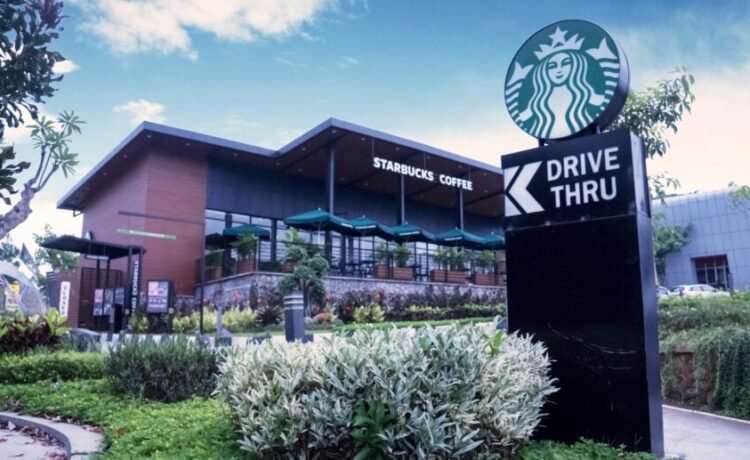Landlords are likely to choke on their morning cup of joe—Starbucks is leaving neighborhoods en masse, and the repercussions could echo around the rental real estate market.
Rental property owners usually breathe a sigh of relief at the sight of Starbucks’ familiar green-and-white awning in a neighborhood they have invested in or are considering. A popular train of thought is, “If Starbucks customers can afford to pay $5 for a cup of coffee, they can afford to pay me rent.” Landlords can also be confident that, in addition to regular rental income, their property values will increase.
That’s not idle speculation. There’s a term for it: the “Starbucks Effect,” coined by Zillow after a 2015 report found that between 1997 and 2014, homes within a quarter-mile of a Starbucks increased in value by 96%. Of course, home values throughout the country appreciated during that period, too, but by 60%, not 96%.
Why Starbucks Is So Influential to Real Estate Values
Starbucks is considered a reputable company with upscale clientele. When one lands in a neighborhood, it’s as if the real estate gods have given the area a seal of approval, signaling for other brands, residents, and investors to follow suit.
Hannah Jones, senior economic research analyst at Realtor.com, explained it this way:
“The presence of the café could then add to the area’s appeal, along with the other factors that convinced the company to open the location to begin with. Put differently, Starbucks doesn’t cause home values to rise on its own; instead, it tends to open stores in neighborhoods where other factors, such as economic growth, rising demand, and increasing property values, are already at play.”
Todd Drowlette, a former exclusive Starbucks real estate broker who now represents competitor Dunkin’ Donuts in New York, concurs, telling Realtor.com:
“People consider a neighborhood’s total package. Having amenities in close distance adds to the desirability. Everyone wants convenience today. Whole Foods still brings with the brand a feeling of an upscale community because people know the type of neighborhoods they are located in.”
Why Starbucks Is Closing Stores
Money, what else, is at the root of the closures. Starbucks has decided to shutter 400 of its nonperforming retail stores, cutting around 900 corporate jobs. CEO Brian Nicol explained in an open letter that the closures target stores “where we’re unable to create the physical environment our customers expect or where we don’t see a path for financial performance.”
Worried landlords, expecting a drop in business, might find solace in the fact that Starbucks still has 18,000 physical locations operating in the U.S. and Canada, and that the closures are not spread evenly. However, landlords in dense urban areas in the Northeast, such as Philadelphia, Northern Virginia, Baltimore, and Washington, D.C., could have cause for concern, having already witnessed a flurry of closures.
Philadelphia alone saw the closure of five Starbucks locations recently. Northern Virginia has seen a cluster of 16 stores close across the DMV (District of Columbia, Maryland, Virginia) area—including nine in Washington, D.C.— which were confirmed to be closing, according to WUSA9.
“Many of the closures listed are in city cores or densely built commercial corridors,” says Jones. “That matches reporting that Starbucks is shutting ‘some high-profile urban locations’ as foot traffic in central business districts remains depressed.”
The Starbucks Exit Effect
Just as Starbucks moving into an area signals desirability for other businesses, retailers, and landlords worry that its exit could have the opposite effect.
“One closure might not cause lasting damage…If it begins the downward spiral with two or more, it will hurt surrounding property values” Drowlette said.
Other Brands That Boost Property Values
Starbucks is not the only brand that boosts real estate values in a neighborhood, but its presence has the most dramatic effect. Zillow’s 2015 survey found that neighborhoods with Dunkin’ Donuts experienced an 80% increase in property values.
A 2022 survey by real estate data and analytics company ATTOM found that grocery stores Trader Joe’s, Whole Foods, and ALDI were likely to have a considerable positive effect on home prices, with homes near an ALDI experiencing a 58% increase over five years, Trader Joe’s 49%, and Whole Foods a 45% increase. Properties near these locations were also likely to be favorable for house flippers.
ATTOM’s Rick Sharga said in the report: “It turns out that being located near grocery stores isn’t only a matter of convenience for homeowners, but can have a significant impact on equity and home values as well. And that impact can vary pretty widely, depending on which grocery store is in the neighborhood.”
Your Neighborhood’s Ability to Recover From a Retail Setback Can Determine Its Fate
Losing a tenant like a Starbucks does not have to sound the death knell for a neighborhood. If a vacant storefront is filled quickly by a desirable local or national brand, the damage can be mitigated.
Usually, national brands can pay more rent than smaller local companies. However, many high-priced municipalities have bylaws restricting national brands, enhancing their local community atmosphere and sense of exclusivity, which in turn can boost property prices.
The trend nationally, however, has seen national brands dominating the retail scene as high rents force smaller retailers out. While most landlords and tenants want to feel they own and live in a unique location with a specific character, rather than a homogenized neighborhood that could be anywhere in America, the presence of larger retailers probably means greater stability for a neighborhood, which is far more preferable than vacant stores.
Possible Wider Ramifications Following the Starbucks Closures
Starbucks closures could carry implications beyond commercial real estate. Analysts at Forbes have drawn a correlation between them and signs of evolving consumer and worker values, skepticism about premium pricing in a time of affordability challenges, and demand for different store experiences. Rising operating costs from labor to rent to supply chain issues have squeezed profitability from retail and dining chains, according to GlobeSt.
Should more closures of other upscale brands follow, not only will the job market be affected, but so will the affordability for workers and renters to live in once-thriving neighborhoods.
Final Thoughts: What Landlords Should Watch For Next
The upcoming months will indicate whether the Starbucks exit marked the beginning of something larger, and what impact it could have on rental markets. Here are some of the things landlords should look for when evaluating a place to invest that has recently experienced retail closures:
- Cluster effects: Are retail closures limited to specific areas, or are they happening nationally in different regions?
- Tenant replacement rates: How quickly can former Starbucks sites get repopulated with quality tenants?
- Residential price movement: As stores close, what is the effect on home and rental prices?
The Wall Street Journal pointed out that, in the face of inflation and rising costs, Americans generally can no longer afford restaurant and coffee prices, and are generally eating out less.
Thus, the Starbucks closures are more than a coffee story. They mark the convergence of commercial real estate, consumer behavior, and the viability of upscale retail amenities that could have a profound effect on residential landlords, tenants, and investors.








Recent Comments